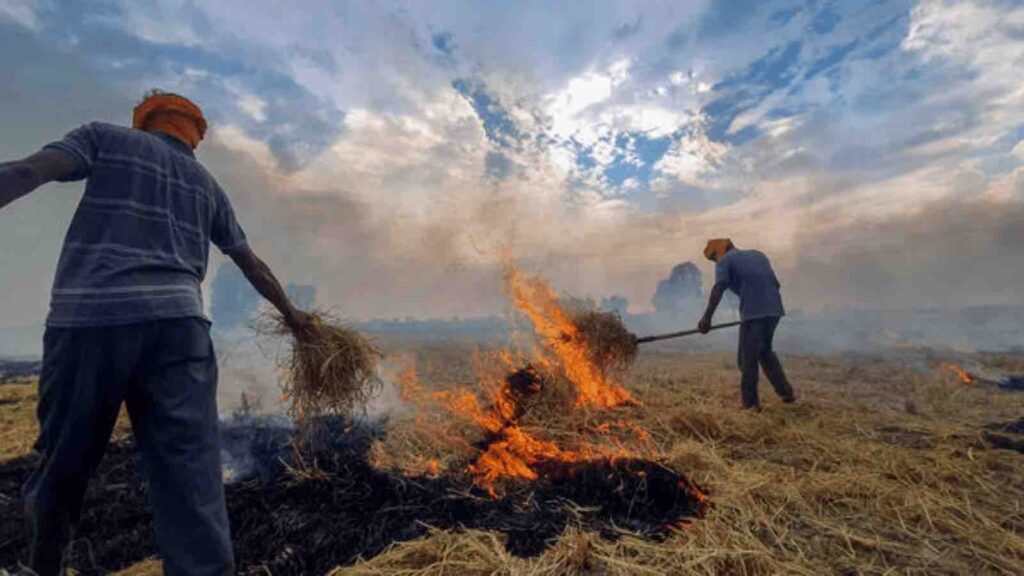Despite this improvement, the overall air quality in the national capital remains in the ‘poor’ category.
In the bustling metropolis of Delhi, a city often grappling with air pollution, there’s a glimmer of hope as recent measures and natural occurrences have brought a significant improvement in air quality. Delhi, NCR region Air Quality Index (AQI) stood at 266 on November 13, post Diwali, at 6 am according to the Central Pollution Control Board (CPCB).
RELEVANT SUSTAINABLE GOALS



Delhi’s Air Quality: A Brief Respite Before Pollution Surges Again Post-Diwali
Delhi, a city that has been wrestling with ‘severe’ air quality, witnessed a momentary breath of fresh air following light showers on November 10. The morning air quality on Diwali was the best recorded in eight years. However, this respite was fleeting as pollution levels in Delhi skyrocketed on the night of Diwali, despite a stringent ban on the production, sale, storage, and bursting of firecrackers.
Delhi’s air quality remains in the ‘poor’ bracket, with certain areas like Delhi University and Lodhi Road experiencing AQIs between 218 and 269.
Most areas in Delhi still under #hazardous category. Stay indoors, and take care of your family. #DelhiAirPollution pic.twitter.com/DTavP7OeG1
— Thongkholal Haokip (@th_robert) November 13, 2023
The spike in Delhi’s air pollution can be largely attributed to two critical factors: stubble burning incidents in neighboring states, particularly Punjab, and vehicular emissions. These factors significantly contribute to the degradation of air quality across the Indo-Gangetic plain. The situation is exacerbated by unfavorable meteorological conditions, including a drop in temperature and sluggish wind speeds, which hinder the dispersion of pollutants. As a result, Delhi, along with neighboring regions like Haryana, Punjab, and Rajasthan, find themselves grappling with soaring pollution levels, posing a significant challenge to the health and well-being of their residents.
The Supreme Court of India, addressing the urgency of combating air pollution, has highlighted the critical need to stop crop residue burning, a key factor exacerbating Delhi’s air pollution. As per the Commission on Air Quality Management (CAQM), stubble burning was responsible for about 38% of the city’s air pollution on November 8. Following this, the cabinet secretary directed Punjab authorities to take robust measures against further stubble burning during the ongoing harvest season.
Previously, Delhi’s AQI lingered in the ‘severe’ category, reaching a peak of about 407. The Central Pollution Control Board (CPCB) defines an AQI between 201 and 300 as ‘poor’ and 301 to 400 as ‘very poor.’
Reducing Air Pollution Through Crop Residue Management
Stubble burning has been a longstanding issue. Between September 15 and November 7, over 22,000 such incidents were recorded, predominantly in Punjab. This agricultural practice not only pollutes the air but also poses severe health hazards, including respiratory issues, heart diseases, and even cancer.
In response, the government, under the Crop Residue Management (CRM) scheme, has allocated ₹3,333 crore to tackle the problem. Punjab and Haryana have utilized these funds for seeder machines, aiming to lessen the incidence of stubble burning.
Moreover, Haryana has introduced schemes to incentivize farmers for straw procurement and promote crop diversification, a move that encourages a shift away from paddy cultivation. Similar actions are urged in Punjab to mitigate the issue in the upcoming seasons.
Experts are calling for a complete ban on stubble burning, with stringent penalties for violations. They also recommend the creation of designated stubble management zones and financial incentives for farmers who adopt sustainable practices. These strategies, coupled with improved ex-situ crop residue management, are vital for enhancing air quality and safeguarding public health and the environment in the long run.
Lead image courtesy of PTI. Stubble burning contributed about 38% to the air pollution level on 8 November
You may also be interested in :
Right to Clean Air : 5 Strategic Actions For Cities To Ensure Everyone Breathe Clean Air



